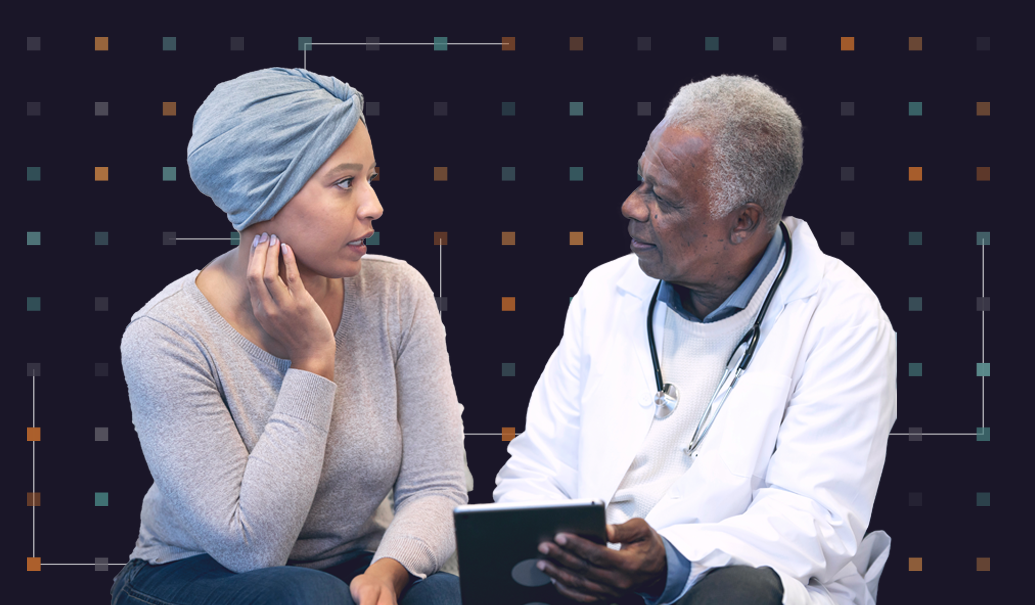Software as a medical device (SaMD), or software intended to be used for medical purposes, is increasing in its importance and potential to improve health outcomes as it continues to attract investment across healthcare. To discover more about the state of these digital health solutions, ZS commissioned research with executives at 91 companies in pharma, medtech and healthtech to explore their plans for and challenges around development of software as a medical device (SaMD).
Our research confirmed that, no matter the size of the company, its maturity or its depth of expertise outside of SaMDs, most healthcare leaders recognize that successfully launching SaMDs requires a hybrid approach that mixes in-house development with outsourced strategic experience. Specifically, they acknowledge that regulatory strategy, along with evidence generation strategy and support, are best led by external expertise partners. Expertise partners excel at guiding pricing, steering go-to-market strategies and addressing the challenges of patient engagement.
Our research involved companies of various sizes: A third of them were small (less than $200 million in annual revenue), a third were midsize ($200 million to $3 billion in annual revenue) and a third were large ($3 billion or more in annual revenue). The companies were primarily U.S.-based with global operations. Respondents were director-level and above (with 25% sitting in the C-suite) in departments that spanned strategy, commercial and marketing, R&D and product, and clinical or medical. Respondents had moderate-to-strong decision-making authority and moderate-to-strong confidence in their ability to speak about digital medicine and SaMDs.
In fact, 63 of the 91 companies that participated in our research already had digital medicine or SaMD products in the pipeline or market. And most companies we surveyed are currently investing in SaMDs, with 80% devoting more than $1 million toward building these products, and 89% saying that their budget will increase in the next three years.
Our participants cited different business drivers behind their increase in focus and investment in SaMD. Pharma clients saw these technologies as a route to garnering real-world data and insights on patient behaviors, treatment effectiveness and safety profiles. Participants in other industries, especially those in healthtech, expect that the market for SaMDs will grow. They see room for innovation, especially in clinical decision support and other areas that demand physician time. They also note that these software solutions can be developed at a relatively low cost and yield high margin.
Despite their optimism about SaMD investments and the potential value their products can deliver, our respondents identified a number of challenges that are difficult to navigate without a SaMD expertise partner. Those that rose to the surface across the companies we surveyed include hurdles on the path to regulatory clearance, clinical acceptance, reimbursement and scale.
Regardless of the type or size of company, respondents cited regulatory and compliance hurdles for SaMDs as a challenge—particularly for pharma companies. Across industries, respondents noted the evolving regulations and expectations from the FDA for digital medicine that are often unclear. SaMDs face different regulatory guidelines than those that pharma teams are familiar with, as are the methods and expectations for engaging with the FDA on digital medicine products. Pharma’s lack of experience in these areas raises questions for their internal legal teams.
Across respondents in medtech, healthtech and pharma, regulatory and compliance issues were cited as a major complexity, due to the challenges that come with evolving regulations, novel technologies and a lack of internal experience working with the FDA or other authorities. The challenges our participants noted included:
- Little internal experience and expertise: “We have an in-house regulatory team, but this is a new area for them in which they have limited experience.”
- Evolving requirements: “With new guidance coming out all the time, it is hard to constantly change requirements. What worked for one program may not work for a similarly scoped program that is submitted to a regulatory group six months later.”
- Novel technologies: “SaMDs are often new and innovative. Current regulations may not align with emerging technologies.”
- Different countries, different rules: “Differing pathways in different countries result in higher resources and costs to submit.”
- Overly burdensome expectations: “The regulations add a lot of overhead and are not always geared toward the safety and effectiveness goals we are typically focused on.”
All of these factors make regulatory and compliance issues more complex, more time-consuming and more costly for our respondents. These factors demand a higher acuity of alignment between SaMD product and technology teams and regulatory experts to maintain a balance between quality, safety and a viable product.
Our survey respondents identified evidence generation as the second most challenging area when successfully planning and launching a SaMD. Leaders from healthtech companies considered evidence hurdles equally challenging as regulatory ones, mostly owing to the tremendous cost burden of running studies and generating real-world data as a startup or small company with fewer resources. For many teams, evidence generation for digital medicine is outside of the core competencies held by the team—typically software development, hardware development and product management. Leaders recognize that evidence generation involves far more than research studies to prove clinical effectiveness or validate algorithms. The word “evidence” connotes a series of activities that start early in the product development process and continue long into the commercialization phase, fueling adoption, acceptance and opening the door to reimbursement.
The evidence generation challenges our respondents called out aligned with both pre-market development and post-market activities.
Pre-market evidence generation challenges
- Determining the product and market fit with sufficient certainty: It is challenging to obtain “validation from potential stakeholders on usefulness and acceptance” and “have deep and correct insights into unmet customer and clinical needs,” according to our respondents. This is particularly true when “the market and products have not been established as the norm.”
- Designing studies and defining endpoints for clinical effectiveness: For many leaders developing SaMDs, “defining objective endpoints” or “demonstrating hard endpoints either alone or in conjunction with therapy” is challenging, especially when the comparative gold standards are mostly qualitative. Additionally, it is difficult to design studies that isolate the “software treatment benefit.” And for complex diagnostic systems, it’s hard to design studies that will deliver objective endpoints.
Post-market evidence generation challenges
- Delivering studies for scientific adoption: “Clinical evidence is needed for both adoption and to convince payers that the technology should be reimbursed,” shared one respondent. Digital medicine products “need many more proof points and RWE studies” and “clinical studies are wildly expensive.”
- Gathering evidence for commercial and payer reimbursement: It is difficult to “define and meet endpoints that have credibility and matter with payers or employers if reimbursed independent of health insurance.” Payers have “limited experience and precedent” for digital medicine and there is uncertainty about the “amount and type of evidence that is required to satisfy payers.” When adding new codes or adding products to a formulary, it is challenging to “demonstrate the value versus the price.”
Additional evidence-related concerns
- Finding available data and proving its quality: Data availability, quality and provenance is a concern for key stakeholders. “If we use third-party evidence, we need to provide provenance of the data to ensure providers believe in it. Payers also need to be able to review the source data used by the solution.”
- Engaging with clinics and medical review boards: “Many medical review boards don’t have experience with SaMDs, which makes getting approval more difficult.” Many clinics are “not willing to engage in SaMD clinical research” and “reduced clinical staffing at hospitals results in cancelled or delayed clinical trials.”
Our survey asked about other challenges to developing and successfully launching SaMDs. A few that stood out were:
- Designing tools for adults who are skeptical of or uncomfortable with new technologies: One respondent mentioned that, “The patient population in many applications tends to be older, which results in less familiarity with SaMD and less willingness to try something new.” Another respondent shared that “There is still a lot of skepticism of SaMD, even when there’s evidence of efficacy and safety.”
- Differentiating products: It’s becoming harder to develop products that will stand out in an increasingly competitive field. A respondent explained that “Competition is intense in this space.” Another described, “Coming up with truly novel and unique solutions can be difficult if the end clinical goals are always the same. In other words, there are only so many ways to deliver a solution and it is, most of the time, the first to market that will win.”
- Strategizing monetization, reimbursement and pricing: One key to SaMD success is determining the optimal delivery channels, the model for revenue, reimbursement and optimal pricing that will work in different markets to deliver the greatest revenue in the shortest period. A respondent shared, “Even if the SaMD provides better information without the appropriate pricing or reimbursement and KOLs showing the value, it will be difficult to compete.” Another individual said, “Reimbursement is very difficult without a clear change in outcomes.”
Our survey asked our respondents the considerations that drive their companies to consider outsourcing. Not surprisingly, the most important consideration in deciding to outsource is the availability of expertise and capabilities within the organization: Half of respondents mentioned that as the first reason to outsource. The second reason, mentioned by 24% of respondents, was the cost or price of looking elsewhere for certain capabilities. Other factors mentioned were speed and bandwidth of existing resources and the desire for control.
As they choose external partners, our respondents recognized both pros and cons to selecting an end-to-end support partner versus bringing in a best-of-breed partner known for one capability such as regulatory excellence, commercial planning or evidence generation.
Best-of-breed SaMD partners may offer point support, but they are more difficult to contract and manage. And when companies must manage multiple partners, the risk of discontinuity in communication increases. For example, one company said about best-of-breed partners, “We prefer to look at different vendors based on specific areas of expertise. For example, we secured a separate vendor that has proven expertise in regulatory clearance and another on reimbursement.” Another said, “When looking at external expertise, it is usually just to vet or confirm assumptions with respect to market size and needs. Development of the solutions is always left to internal teams, but sometimes the initial needs or possible solution space might come from an external group.”
A single, end-to-end SaMD partner empowers companies to cohesively manage the multiple interconnected challenges of SaMD development, evidence generation and preparation for commercial launches. Regarding their experiences with end-to-end providers, one respondent said, “We prefer a one-stop-shop providing end-to-end solutions.” Another noted, “We don’t want to coordinate with more than one external service.” A different respondent said that an end-to-end provider could be an advisor and partner to deliver “AI and machine learning skills, digital care journey skills, knowledge of healthcare challenges and value-based healthcare expertise.”
Regardless of their preferred partner type (best-of-breed or end-to-end), nearly all companies who are investing in SaMDs are doing so with expertise partners by their side.
This article includes contributions from Maurice Solomon, Eriola Kruja, Carrie Olson, Chinmay Kapdeo, Arunim Nandy, Dan Weinstein, Eleanor Justin, Andrew Stepp, Harsh Ranjan and Matthew McCarthy.






